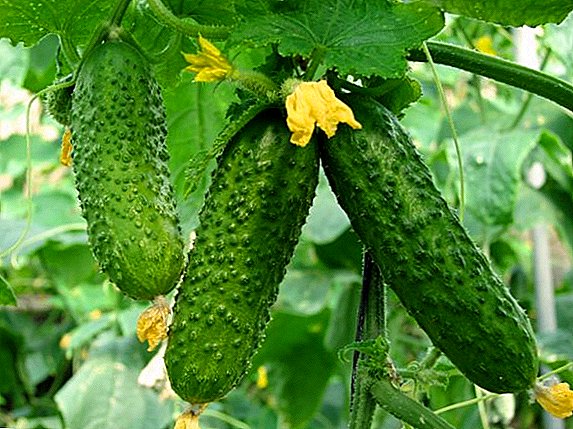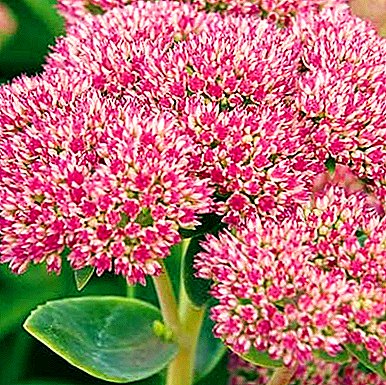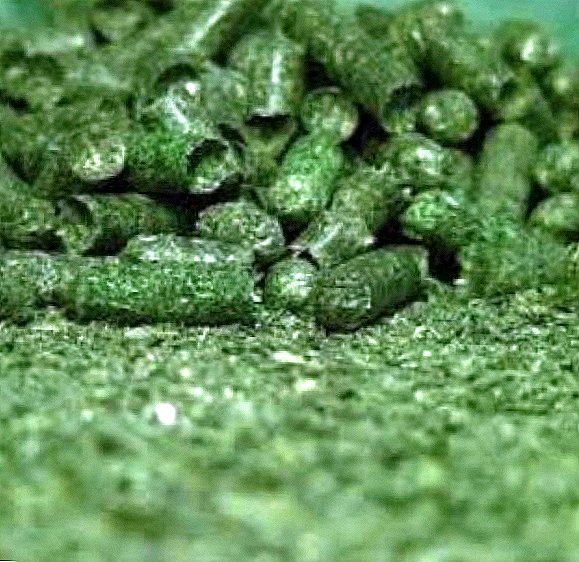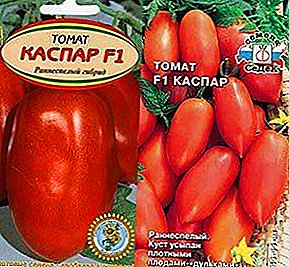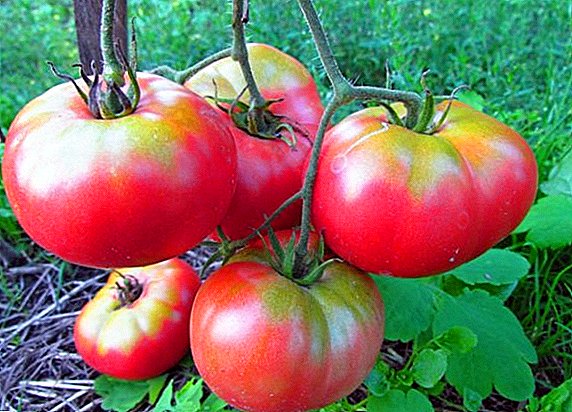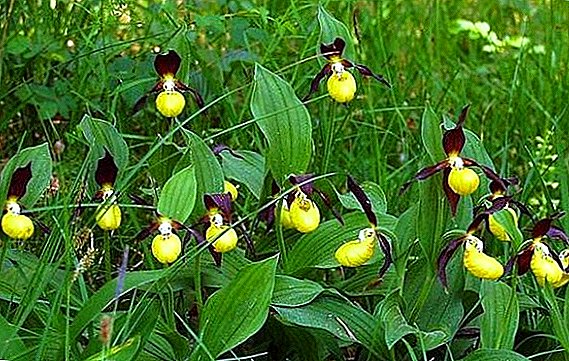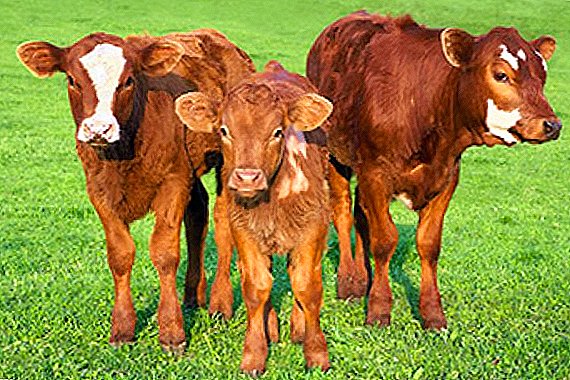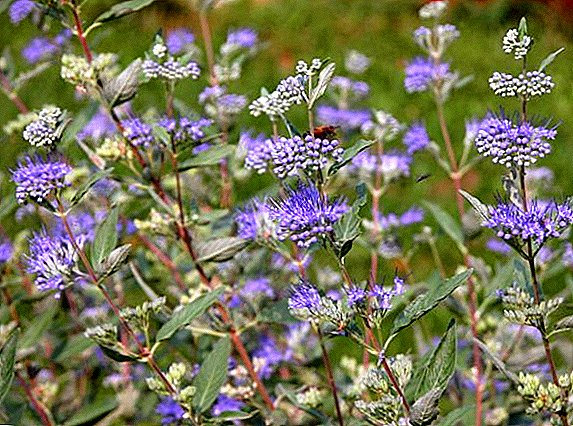 With the arrival of autumn bright summer colors fade. An ornamental shrub with blue flowers called karyopters will help to correct the situation. At a time when most of the summer shrubs have already flowered, it only blooms and pleases the eye.
With the arrival of autumn bright summer colors fade. An ornamental shrub with blue flowers called karyopters will help to correct the situation. At a time when most of the summer shrubs have already flowered, it only blooms and pleases the eye.
Cariopteris: description and species
 Shrub karyopteris has the following description: plant hemispherical, compact form. The top of the hemisphere is covered with small flowers of white, blue, blue or violet color, and the bottom is bordered with carved leaves of silver-green color.
Shrub karyopteris has the following description: plant hemispherical, compact form. The top of the hemisphere is covered with small flowers of white, blue, blue or violet color, and the bottom is bordered with carved leaves of silver-green color.
Flowers are collected in umbrella inflorescences, which, in turn, form paniculate inflorescences.
The height of the bush varies from one to one and a half meters. Stems erect, even. The leaves of the plant with notches on the sides, lanceolate, have a heady spicy-coniferous smell. In our region, the plant was imported from North China, Mongolia, and Central America. Natural habitat - mountain slopes, rocks.
Did you know? For the peculiarities of flowering, the people called cariopteris with a blue mist, a blue beard, a walnut.Blossoms walnut from August to October. There are 15 types of karyopteris. The greatest demand among flower growers are Kariopteris Klandonen and gray.
Cariopteris gray. Inhabits a semi-handicraft plant in Japan, Korea, and Taiwan. Nuthook has woody slightly pubescent shoots. Plant height does not exceed 1.2 m. Leaves are narrow, oblong, yellow-green color. The flowers are small. Stems and leaves of a bush have a pleasant citrus smell. Blue mist blooms in the month of July.
Kariopteris Klandonen. For variegated colors, the Kladon walnut is also called variegated. Variegated kariopteris is derived from the hybridization of gray-haired and Mongolian karyopteris. 
Leaves of hybrid varieties of this type of plant are oval, covered with villi, can be either single or two-colored (yellow-green, green-brown, light green with stripes along the edges). Color tubular flowers purple-blue. Plant height does not exceed one meter. Winter-hardy plant, originally from North China.
Kariopteris Forrest. This is a flowering semi-shrub plant with flowers of white-green or light-blue color. Leaves of gray-green color are oblong, oval, covered with fibers.
Cariopteris is sticky. A plant that reaches a height of one and a half meters. The leaves are oblong, narrow, shiny, sticky. Small flowers of lilac-blue color. Small shoots, buds and ovary covered with fibers. Gummy karyopteris blooms in early September.
Cariopteris tangut. Upright plant up to two meters. The pubescent shoots are gray in color. Oval-shaped leaves. Blue-violet flowers form a spike-shaped, dense inflorescence.
 Mongolian kariopteris. Semi-shrub plant with a height of 30 to 150 cm. The shoots are erect, brown in color, covered with villi. Leaves oblong, oval. Shrub blooms from August to October. The flowers are blue-lilac color.
Mongolian kariopteris. Semi-shrub plant with a height of 30 to 150 cm. The shoots are erect, brown in color, covered with villi. Leaves oblong, oval. Shrub blooms from August to October. The flowers are blue-lilac color.
Important! Shrub attributed to express perennials. The plant blooms in the year of sowing.
Where to plant Karyopteris
Everyone knows that the correctly chosen place for planting is the key to success in its further cultivation. Nut is not an exception to the rule. Features of growing karyopteris, namely, planting and care, are outlined below and presents a photo.
Lighting for blue-eyed shrub
Karyopteris should be planted in an open, well-lit area. The terrain should not be purged, it is better that it is protected from drafts. Shrubs planted in the shade do not develop well, leaves and buds turn pale, losing their decorative appearance. Kariopteris with leaves of yellow shade looks more attractive in intensive sunlight.
What kind of soil loves karyopteris
 The flower karyopteris prefers to grow in drained soil with sand impurity. Acceptable for plants are increased acidity and stagnation of moisture in the soil. The plant easily tolerates a large amount of lime in the soil. You can not plant a shrub in sandy soils.
The flower karyopteris prefers to grow in drained soil with sand impurity. Acceptable for plants are increased acidity and stagnation of moisture in the soil. The plant easily tolerates a large amount of lime in the soil. You can not plant a shrub in sandy soils.
Planting rules Karyopteris
In order for the shrub with blue flowers to grow in your yard, bringing pleasure with bright saturated colors and abundant flowering, you need to follow some rules. The rules are quite simple, but their implementation will already provide you with half the survival rate and successful development of the wallet.
How to choose seedlings for planting
Growing karyopteris, as a rule, is made by saplings or seeds.
 Choosing a sapling, carefully inspect it for rot on the stems and holes in the foliage. If there is even the slightest sign of damage, you should refrain from purchasing a seedling.
Choosing a sapling, carefully inspect it for rot on the stems and holes in the foliage. If there is even the slightest sign of damage, you should refrain from purchasing a seedling.
It is also undesirable to buy flowering seedlings, they can not settle down. A healthy seedling has a powerful trunk and is well pubescent with green leaves. Yellow leaves are a sign of a weak seedling.
Did you know? Cariopteris is used as a honey plant.
Landing dates
If you decide to grow the nut from the seed, for low temperature hardening, seeds should be sown in late autumn or early spring. Acquired seedlings are best planted in open ground in mid-April. If the shrub is purchased in the fall, it is better to put it in a pot for the winter period and take it to a cellar for storage in the basement.
The technology of planting karyopteris in the garden
Kariopteris requires that planting and care be conducted as it should be done with respect to capricious shrubs. Planting plants is best done in groups.
 The depth of the landing pit should be 5-10 cm greater than the height of the earthen basal lump. The width of the pit make three times the width of the coma. The landing pit is necessarily drained, since the root system of the nut stalk rot when moisture stagnates. As the drainage used humus and sand.
The depth of the landing pit should be 5-10 cm greater than the height of the earthen basal lump. The width of the pit make three times the width of the coma. The landing pit is necessarily drained, since the root system of the nut stalk rot when moisture stagnates. As the drainage used humus and sand.
If the seedling is purchased in a container, it must be carefully removed. The root system carefully straighten and place the seedling in the pit. Earthen room should be at the same level with the level of the soil. Sprinkle with earth and irrigate the seedling.
Peculiarities of growing karyopteris
Like any flowering plant, karyopteris requires that it should be fully maintained. Timely watering, fertilizing, pruning and reliable shelter for the winter - all that is needed is an express perennial.
Important! Walnut flowers can withstand temperatures as low as -3 ºC.
Watering Karyopteris
Kariopteris is a drought-resistant plant, therefore it does not need frequent watering. Watering shrubs carried out when the soil is dry enough. Irrigation should be moderate, without stagnant moisture.
Fertilizer and dressing
Feed the plant at the beginning of the growing season with complex mineral fertilizers. During the growth of shrubs it is watered in small quantities with solutions of organic fertilizers. Cariopteris, which is grown in fertile soil, does not need fertilizer.
Karyopteris pruning
 Shrubs karyopteris grown in the country, as well as grown houses, require regular pruning.
Shrubs karyopteris grown in the country, as well as grown houses, require regular pruning.
Since the color is formed only on the newly formed stems, the main pruning is carried out in early spring.
Shrubs are cut no higher than twenty centimeters from the ground level, giving them a spherical appearance.
Frozen and weak shoots pruned more, even at ground level. This method of annual pruning provides the ability to maintain a certain type of shrub. Autumn pruning plants is to remove the faded panicles. Every few years, the nuthead is rejuvenated by cutting it at least five centimeters above the ground level.
Features care karyopteris winter
While ensuring full moisture recharge during the season, Karyopteris will not freeze out in winter. In order for the shrub to endure wintering without harm, it needs to be covered. The soil around the shrub is covered with straw or sawdust, and the bush itself is wrapped with paper or sacking.
 When grown in harsh winters, the plant is cut for the winter and transplanted into a pot or container.
When grown in harsh winters, the plant is cut for the winter and transplanted into a pot or container.
The transplanted plant is moved to a room with a temperature of not more than +10 ºC.
Once a month the plant is watered with a small amount of water.
Did you know? Dried stalks of the walnut with flowers are used to create ikebana.
How to multiply Karyopteris
Nutcracker propagated by cutting, layering or seed. Reproduction by cuttings carried out at the beginning of the growing season. For cuttings, cut stems up to 15 cm long and send them to take root in a jar, a greenhouse, or in a pot, covered with a jar. A greenhouse or jar is periodically opened for airing and watering. 
Seed propagation. At the end of winter or at the beginning of spring, seeds are sown in pots with a special substrate. Seeds gently scatter on the surface of the soil, without having to sprinkle with earth. The container is covered with polyethylene, which is periodically cleaned for ventilation and watering.
 Seedlings germinate within two weeks. When two or three leaves appear, they dive. In open ground seedlings are planted not earlier than the beginning of May.
Seedlings germinate within two weeks. When two or three leaves appear, they dive. In open ground seedlings are planted not earlier than the beginning of May.
Reproduction by layering. To get a quality bush, a slightly stiff stem is clamped with a bracket to the ground surface and sprinkled on top of the ground.
Major diseases and pests, difficulties in growing shrubs
Kariopteris is a shrub resistant to diseases and pests. Sometimes he may be bothered gadflies or rot.
Rot occurs when the soil is wet. If you find signs of decay, the plant needs to dig up and trim rotten roots. Having relieved the karyopteris from the affected parts, it is transplanted into a new landing pit with drainage.
The appearance on the leaves of the plant dotted lines of holes and small dots indicates the defeat of his blindflies (grass bugs). Get rid of blindfly by spraying the bush with biological products.
Important! To prevent the emergence of pests by regularly raising the ground around the bush.


